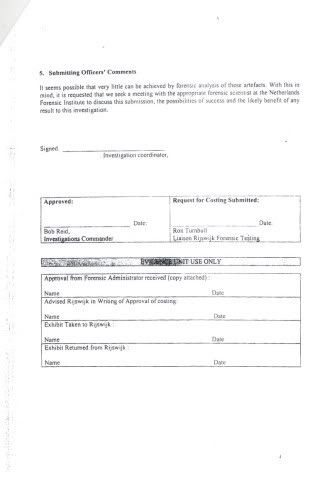NATO
in the Balkans (1999)
Humanitarian
Intervention or International War Crime ?
Title Page & Materials Preceding the Text
a. Preface
b. Table of contents
c. List of Tables and Illustrations / Glossary
Text
Introduction
of the Paper / Preface
1. NATO’s 78 Day Humanitarian Intervention
in Yugoslavia in March & April 1999 Violated Int’l Law
2. Brief History of Yugoslavian State Formation
and its Ethnic Problems Leading up to the 1999 Kosovo Crisis
Body
of the Paper / Chapter and Sub-Chapter Headings
3. History of Yugoslavian State Formation and
Ethnic Make-up Leading to Current 1999 Kosovo Crisis
4. Extent to which Evidence of a Humanitarian
Catastrophe Immediately Prior to the NATO Bombing of Yugoslavia
Existed
5. The Role of the Kosovo Liberation Army
(Albanian) in Kosovo and Metohia and Their Sponsors
6. The Role of the OSCE Verification Mission Prior
to NATO’s Bombing
7. The “Racak Massacre” and the Media
8. The Rambouillet Process and Int’l Law
9. The Question of Sending in American Ground
Troops in Kosovo and NATO Occupation Thereof
10. NATO as Peacemaker or Peacebreaker in the
Balkans
11. NATO’s Alleged Link with Osama Bin
Laden’s Connection to the KLA in Kosovo to Create a Greater
Albania as Sponsored Mercenaries in the Region
12. NATO’s Post-War Democratization Process
in the Region and Post-Conflict Governmental Plans
13. Free-Market Reforms and Economic
Restructuring Post NATO’s Air War (1999)
14. War Reparations and Civilian Damage to
Civilian Infrastructures Inflicted by the NATO in Yugoslavia
Conclusion
NATO’s
Occupation of Kosovo and Metohia
NATO’s
Damage to the Environment
a. Illegal Weaponry Used by NATO
NATO’s
Damage to Civilian Infrastructures in Yugoslavia
b. Educational Facilities
c. Civilian Health, Institutions and Hospitals
i. Depleted Uranium and Cancer
d. Media Installations
e. UN Protected Cultural and Historical Sites
NATO’s
Planned Assassination Attempts on Yugoslav Political Leaders
NATO’s
Military Spending
Violation
of Domestic and Int’l Law and Conventions by NATO by its
Yugoslavian Air War
NATO’s
Motivation for Committing Such War Crimes
References
and Appendixes
References
Consulted in Preparing the Paper (People)
Other
Sources Pertinent to the Topic (Books, Studies, Dissertations,
Journals and Media etc.)
Appendixes
a. (Photo Documentary Evidence of NATO War Crimes
Against Civilians in Kosovo and Metohia)
b. Definitions of Int’l Legal Terminology
(Glossary)
Bibliography
c. Statement of UNICEF representative in
Beograd, Quoted in Yugoslav Daily Survey, Belgrade, 23 May
1999, No. 4351.
d. Joseph Fitchett, “Is Serb Economy the
True Target?, International Herald Tribune, Paris, 26 May
1999.
e. Statement to Ambassadors of 19 NATO
Countries, quoted in Daily Telegraph, London, 28 May 1999.
f. Tanjug Press Release, 22 May 1999.
g. Dr. Mary-Wynne Ashfordm “Bombings
Reignite War Fears,”The Victorian Times Columnist,13 May
1999, page a15. Mary-Wynne Ashford is co-President of the Nobel Peace
Prize winning IPPNW.
h. Dianna Johnstone, On Refugees, Paris,
30 May 1999.
i. Lawyers Charge NATO Leaders Before War
Crimes tribunal, Toronto, 6 May 1999; See also Jude Wanniski, “Memo
to the US Majority House Leader,” PolyEconomics , New York,
10 May 1999.
j. Intelligence Report from the German Foreign
Office, January 12, 1999 , to the administrative Court of
Trier.
k. Background briefing by a Senior Defense
Official at NATO Headquarters, Thursday, June 11, 1998.
l. US Dept. of Defense Background Briefing,
July 1`5, 1998.
m. Yugoslavian Governmental White Book of NATO
War Crimes in Yugoslavia. Official Governmental Compilation of War
Crimes 1999.
Int’l
Law’s Origins
Int’l
Law is a great compilation of conventions, treatise and agreements
(both oral and written) by which representatives of various states
and nations maintain friendly relations. Usually int’l law is
understood to mean customary and legally written norms which are
implemented through the United Nations Charter (an agreement accepted
and ratified by all UN member states) and which all other bodies of
int’l legal justice have evolved via the UN Security Council.
The precursors to int’l law were the Hague’s 1899 First
Int’l Peace Conference, the League of Nations and the Nuremburg
Trials. Through the Nuremburg Trials all other Int’l criminal
law evolved starting with defining Crimes Against Humanity which the
Nazi Regime was found guilty. Recently, the Rome Statute has tried to
institutionalize an Int’l Criminal Court which has yet to be
effectualised been implemented yet until 66 ratifications take place
at the UN.
1


No comments:
Post a Comment